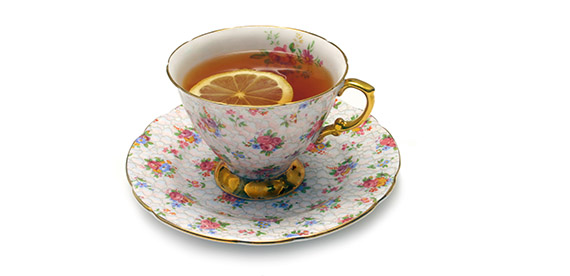Tea Party Recipes, Tea Party Tips
Recipes for Scones
Scones originated in medieval Great Britain and were baked on cast-iron skillets. Although a product of the United Kingdom, the word “scone” derived from the German word, “schonbrot,” meaning “beautiful bread.” Language experts also suggest the “scone” may have come from the Gaelic word, “sgonn,” which translates into “large mouthful.” Oats and barley were the main ingredients used in the original recipe for scones, which were cut into large triangular pieces before they were cooked. Recipes for scones transformed greatly over the centuries to include an array of ingredients.
The pairing of scones and tea has a long history. In the late 18th century, Anna, Duchess of Bedford ordered tea and scones in the late afternoon as a means of holding off hunger until dinner. This tradition became popular among the upper class, and soon became the normal routine for all social spheres. Traditionally, scones and other teatime snacks are served on tiered dessert stands or china trays that match or complement the tea service being used.
Other traditional tea time snacks include tea sandwiches, the classic being the cucumber sandwich on white bread with the crusts removed and usually cut into triangle shapes, but any delicate type of sandwich is appropriate; egg, tuna and chicken salad are other customary fillings for teatime treats. Usually a very thin coating of butter is applied to the bread to keep it from becoming soggy before the fillings are applied. One of our next articles will delve more thoroughly into menus and the difference between “afternoon tea” and “high tea” times.
When paired with an accompanying cup of tea, recipes for scones can be delicious and gratifying. Pairing Cherry-Rose Scones with black, afternoon tea is a delightful way to control hunger without satiating the appetite before dinner. The recipe for Cherry-Rose Scones calls for:
2 ½ cups of all-purpose flour
2 teaspoons of baking powder
½ cup of sugar plus 2 tablespoons of sugar-divided
½ teaspoon of salt
½ cup of cold, unsalted butter, cubed,
1 (3 ounce) package of cold cream cheese, cubed
1 (2 ounce) package of finely-chopped, dehydrated cherries
½ cup of heavy cream
1 teaspoon of rose water
¼ teaspoon of cherry extract
½ teaspoon of vanilla extract.
To bake the scones, preheat the oven to 375 degrees Fahrenheit and line two baking sheets with parchment paper, then set the baking sheets aside. In a large mixing bowl, combine the flour, ½ cup of sugar, salt and baking powder. Use a pastry blender to blend together the butter and cream cheese until the mixture is crumbly. Add in the chopped cherries. In another bowl, combine heavy cream, rose water, cherry and vanilla extract. Add the wet mixture to the dry mixture and stir until the dough is just moistened. Roll the dough on a lightly-floured surface until it is ¾ of an inch thick. Use a two inch round cookie cutter to cut out the scones. Place the scones on the baking sheets and sprinkle with the remaining sugar. Bake the scones between 13 and 15 minutes or until light, golden brown.
Honey, Prune, and Walnut Scones go wonderfully with sweet, lemon flavored tea. The recipe calls for:
4 cups of whole wheat flour
1 tablespoon of baking powder,
teaspoon of salt
½ teaspoon of baking soda
¼ cup of vegetable oil
¼ cup of honey
1 cup of pitted, chopped prunes
1 cup of chopped walnuts
1 2/3 cups of sour milk or buttermilk.
Preheat the oven to 375 degrees Fahrenheit. Line two baking sheets with parchment paper and set them aside. Mix together the flour, baking powder, salt and baking soda. In another bowl, mix together the vegetable oil, honey, prunes, walnuts and sour milk. Combine the bowls and use your hands to form two balls of dough. Flatten the dough on a floured-surface until they are ¾ inches thick. Cut each disc into wedges or use a cookie cutter. Place the scones on the baking sheets and bake for approximately ten minutes or until light, golden brown.
Both of these delicious recipes cannot help but enhance your teatime experience.

